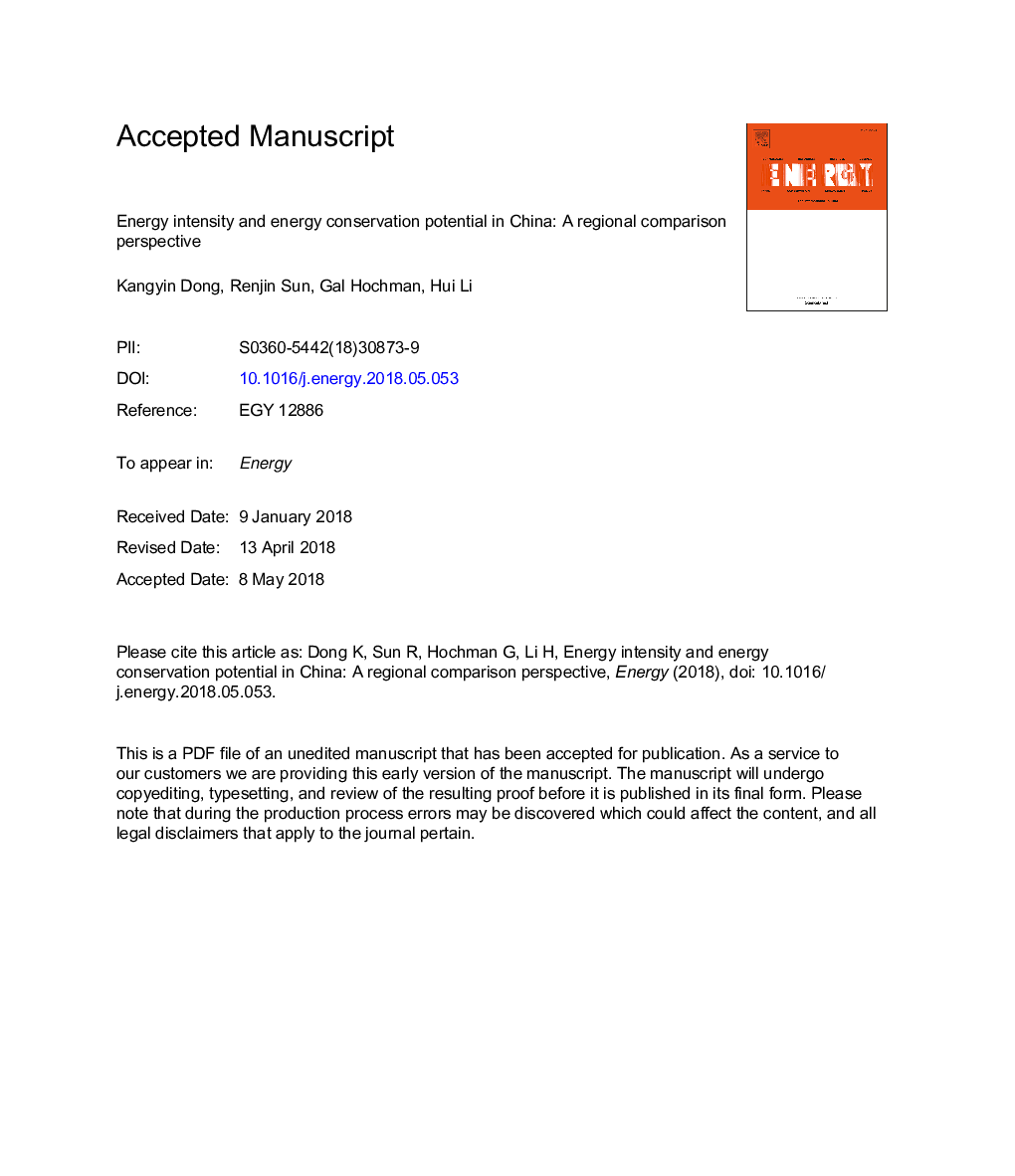| Article ID | Journal | Published Year | Pages | File Type |
|---|---|---|---|---|
| 8071496 | Energy | 2018 | 63 Pages |
Abstract
Increasing energy demand and the associated environmental pressures have ignited the Chinese government's concerns regarding energy conservation. Using provincial-level panel data covering the period of 2000-2015, this study first identifies the drivers of energy intensity across China's regions, employing a series of econometric techniques allowing for cross-sectional dependence and slope homogeneity. Based on the estimation results and scenario analysis, this study forecasts the possible energy conservation potential at the regional level by 2030. The panel augmented mean group (AMG) estimator provides similar estimation results for the three regions: economic structure and urbanization rate are the deterministic factors increasing energy intensity, while R&D investment and relative energy price reduce it. The results of scenario analysis indicate that, under the advanced scenario, the energy conservation potential in the eastern, central, and western regions in 2030 will be 1,209.53 million tons of coal equivalent (tce), 664.23 million tce, and 774.48 million tce, respectively. At the national level, the advanced scenario can save 2,648.24 million tce of energy consumption by 2030, accounting for 43.3% of the energy demand under the business-as-usual (BAU) scenario. Finally, these findings offer several targeted policy suggestions for reducing energy intensity and promoting energy conservation potential at the national and regional levels.
Related Topics
Physical Sciences and Engineering
Energy
Energy (General)
Authors
Kangyin Dong, Renjin Sun, Gal Hochman, Hui Li,
